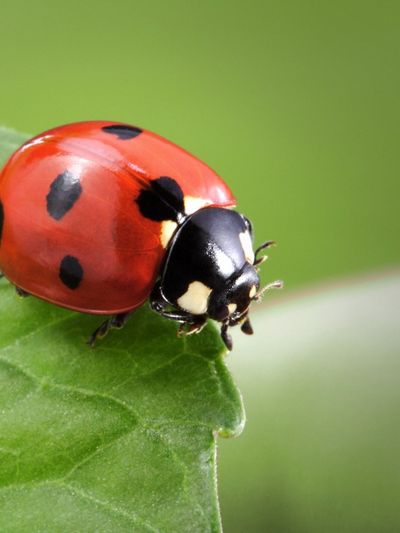Attracting Beneficial Bugs
The best way to draw these beneficial bugs into your garden is by growing their favorite flowering plants. Some of these include:
Mint Daisy (Shasta and Oxeye) Wild carrot (Queen Anne’s lace) Cosmos Marigold Clover
You can also attract these insects by offering them a “bug bath.” Somewhat like a birdbath, this shallow container is filled with stones or gravel and just enough water to keep it moist. Since insects are prone to drowning, add some larger stones to the dish to serve as suitable resting sites. This way they will be able to drink the water without becoming immersed in it. Another way to lure the good bugs to the garden is by not using any harmful pesticides.
Beneficial Insects for the Garden
There are a number of beneficial insects for the garden. In addition to common pollinating insects like bees and butterflies, many other bugs can be helpful. The following ‘good bugs’ should also be encouraged to your garden:
Parasitic Wasps
Parasitic wasps may be tiny, but their presence is of great importance. These beneficial insects lay their eggs in the bodies of numerous pests, feeding off of them and eventually killing them. Some of their victims include:
tomato hornworms aphids beet armyworms cabbageworms
You can welcome these parasitic friends into the garden with plants such as dill, yarrow, white clover, and wild carrot.
Centipedes & Millipedes
You may be surprised to learn that the good deeds of both the centipede and millipede far outweigh the bad. Centipedes wipe out all sorts of soil-dwelling pests, such as slugs, while millipedes help break down organic matter.
Assassin Bugs
Assassin bugs do just as their name implies. These insects are a natural part of the garden and help suppress harmful bug populations by feeding on flies, harmful beetles, mosquitoes, and caterpillars.
Aphid Midges
Aphids, a common nuisance in the garden, are extremely destructive to plants. They not only suck out the sap but spread disease as well. However, there are a number of good bugs that will take advantage of their presence by devouring the harmful pests. The aphid midge is just one of them.
Hover Fly
If you plant some flowering weeds, such as wild carrot and yarrow, between your garden crops, you are sure to attract another helpful insect. The adult hover fly may not do much; but just one of its larvae will do the trick, devouring approximately 400 aphids during its development.
Lacewings
Green lacewing larvae also feed on aphids as well as the following pests:
mealybugs scale bugs moth eggs mites small caterpillars
These insects can be encouraged into the garden by providing water sources and flowering weeds.
Ladybugs
Another aphid-eating insect is the kindly ladybug. Soft-bodied insects, as well as their eggs, are also a favorite of ladybugs. These attractive insects are tempted into the garden with flowering weeds and herbs that include dandelions, wild carrots, yarrow, dill, and angelica.
Pirate Bugs
Pirate bugs attack many bad insects and are especially fond of thrips, spider mites, and small caterpillars. Plant some goldenrod, daisies, alfalfa, and yarrow to charm their presence.
Praying Mantids
The praying mantis is a popular garden friend. This insect will feed on virtually any type of bug including crickets, beetles, caterpillars, aphids, and leafhoppers.
Ground Beetles
Although most beetles are harmful to plants in the garden, ground beetles are not. They feed on cutworms, caterpillars, snails, slugs, and other soil-dwelling insects. Incorporating white clover into the garden entices this good bug. Commonly taking shelter beneath stone or wooden walkways are valuable decomposers called rove beetles. Besides feeding on organic matter, they also eat harmful insects such as snails, slugs, aphids, mites, and nematodes. The soldier beetle can be enticed into the garden by mixed plantings of hydrangeas, goldenrod, and milkweed where it will feed on caterpillars, aphids, and grasshopper eggs.
Other Beneficial Bug Tips
Pillbugs, also known as sowbugs, feed on decaying organic matter and do not pose a threat within the garden unless overpopulation occurs. If this happens, marigolds can often take care of the problem. Mulch can also serve as either a deterrent for bad bugs or an attraction for the good ones. For instance, mulching with heavy straw deters numerous types of beetles; most of which are harmful. On the other hand, mulching with hay or dry grass is a good way to attract spiders. Although some people (like me) hate them, these creatures love hiding beneath mulch where they will catch numerous pesky insects. Becoming familiar with the insects that often visit your garden is the best defense when combating harmful bugs. Pesticides can hurt beneficial insects, as well as plants, and can be dangerous if not used properly; therefore, they should not be implemented. Instead, incorporate a variety of useful plants and welcome the good bugs; let them do all of the work instead.
